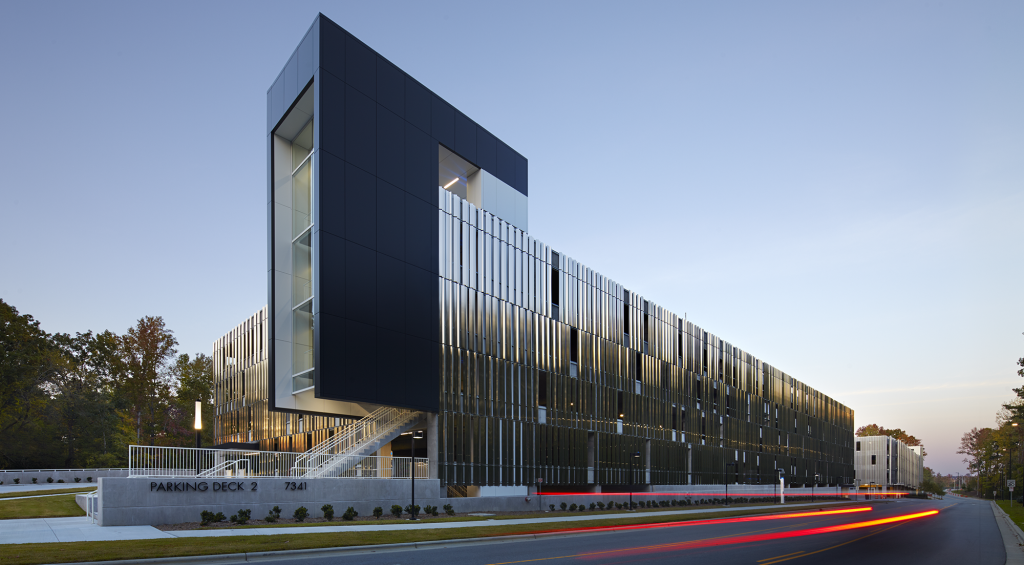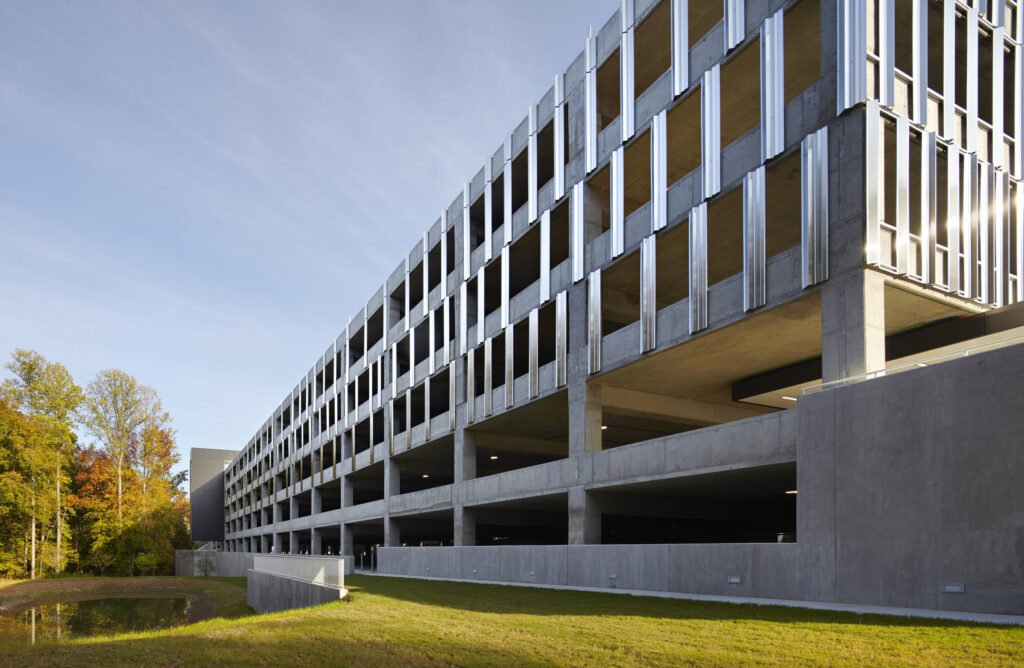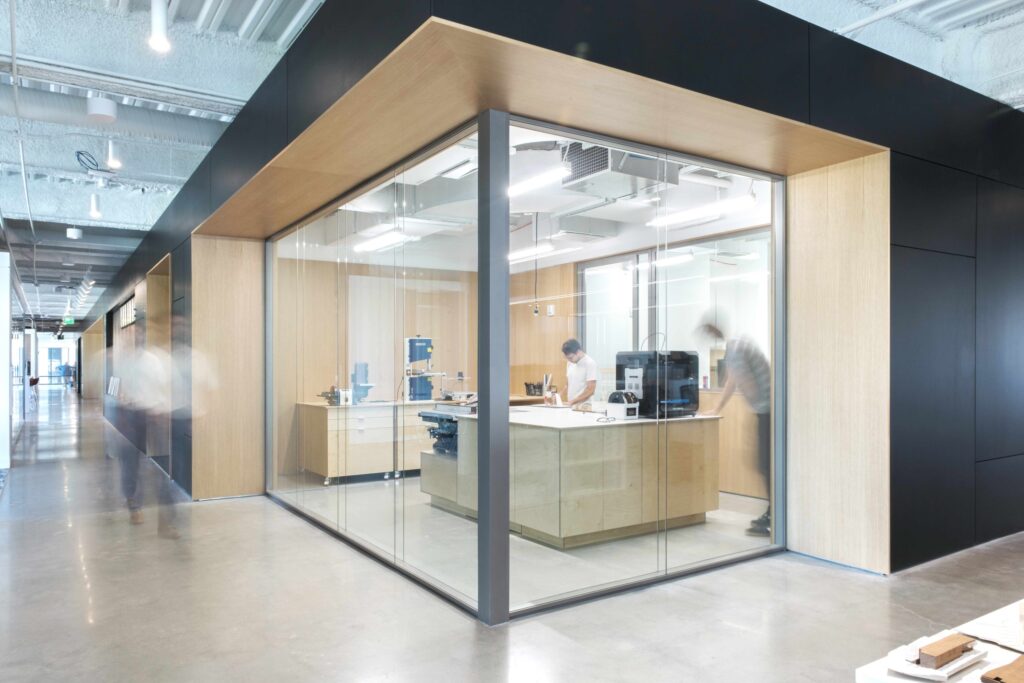
Technology has dramatically changed how we work at Clark Nexsen, enhancing our ability to develop innovative and creative solutions across the company. New tools and technology, from drones to energy and daylight simulations, have impacted what and how we design and deliver projects to our clients. To effectively capitalize on how technology can augment our work, we created a comprehensive resource and strategic hub for practice technology within our firm that meets key goals: supporting our people with the technologies they use frequently, maximizing the potential benefit of those technologies, improving workflows and processes, and investigating and applying emerging technologies in our industry. Known as CNCPT (Clark Nexsen Creative Practice Technology), and pronounced “concept,” the central purpose of this collaborative is to apply advanced digital tools across our interdisciplinary practice to improve the quality and efficiency of our work, help clients make informed decisions, and remain at the forefront of technological innovation.
Within CNCPT, there are three core focus areas: productivity, innovation, and synergy. Productivity, as its name implies, centers on the role of technology in workplace productivity, defining standards, improving workflows, providing training, and making content and documentation easily accessible for the whole firm. Innovation augments the creativity of our design teams with an ecosystem of advanced digital tools by researching emerging technologies, identifying those that offer the greatest benefit, and implementing them when they offer peak value. And finally, synergy represents the optimal outcome when we holistically apply practice technology across the firm.
Seven innovation hubs — visualization, make, simulate, drone, computation, reality capture, and data visualization — comprise our innovation focus area. Each innovation hub operates independently through its hub leaders, who help apply these technologies across the firm, assist project teams, and evaluate what’s next.
Once a month, innovation hub leaders meet to share insights, discoveries, and workflows. These meetings are a critical collaboration point where we uncover synergies across hubs. For example, the reality capture hub may use laser scanning to capture parts of an existing building — but this technology can’t scan the roof. The drone hub can step in and complete our capture of the building with a roof scan. Simulation and computation deliver considerable synergy if building energy efficiency goals are known when computation is leveraged for the façade design, with energy modeling and known wall-to-window ratios becoming data points that influence the options generated. Fundamentally, our innovation hubs are central to how we apply technology to push the envelope in design today and moving forward.
Our computation hub has proven to be extraordinarily beneficial, both to our creative process and our clients. At its core, computational design is codifying the interactions of a design or engineering process through coding or a computer script. By leveraging this tool, we’ve gained the ability to rapidly access substantial project data and efficiently develop unique design solutions that are aligned with the client’s design goals. A notable example of this is the parking deck at Wake Tech. Our initial design had a metal panel skin that was striking visually, however the client wanted a large reduction in overall façade cost. Since it was designed computationally, we were able to work with the contractor to figure out how many square feet of stainless steel we could afford and then determine how many panels that translated to.


“Using our computational tools saved weeks of redesign on Wake Tech,” said Ryan Johnson, AIA, LEED AP, computational designer. “We were able to quickly explore different options, visualize the look in real time, and meet the agreed upon constraints. Ultimately, we were able to reduce the total number of panels within budget while still achieving the design intent.”
The drone hub has generated considerable excitement, as well. Over the past year, our drone hub has grown and begun to explore new ways to support our projects. For example, our drone pilots can scan a site, create a 3D model from that scan, and export it so it can be inserted into design software such as Revit or Rhino. The group is also using software that can keep track of a drone’s flight path and the gimbal angle of the camera, allowing pilots to replicate the flight.
“Being able to reproduce a flight is an incredibly powerful tool,” said Xander Ellenbogen AIA, LEED AP, architect and drone hub leader. “Just recently, we were able to document construction at Blue Ridge Community College by replicating a flight path, allowing us and the client to see how the project was coming together in each phase of construction.”

CNCPT goes beyond advanced drones and computational software. Each of our innovation hubs is adding value by exploring and applying new tools that support more creative and efficient outcomes. For example, our make hub has experimented with new 3D printing materials such as wood filament for more seamless integration with chipboard and basswood; the simulation hub has helped us increase our knowledge of embodied carbon by assisting us in simulating the amount of embodied carbon in our designs; real-time visualization tools have allowed our reality capture hub to make instant changes to models and projects in virtual reality; and the data visualization hub developed a project database that holds all of our project data for the AIA 2030 Commitment, the SE 2050 Challenge, and other data points that are easily accessible and editable by our employees. This database can be reported and viewed by the firm in near real-time to drive change and track our progress toward firmwide goals.
While some emerging technologies yet to arrive as commercial products in market are still years away from being implemented, the way we’ve structured CNCPT enables us to stay abreast of what’s in development so we can remain on the cutting edge. Our focus areas and innovation hubs work together to achieve the best results — helping clients visualize designs, simulating complex functions for designers, and leveraging data visualizations into a vital communication tool. As firms of all sizes look to adopt new technologies, viewing them through lenses of purpose can improve how these technologies are applied and who is leading the charge. We’ve found that making distinctions between the production of deliverables and the tools that support innovation has positioned us to incorporate new technology efficiently and shift our firmwide understanding of how and when these tools can be used.
About the Author
Aseem Deshpande, AIA, LEED AP, is Director of Practice Technology with Clark Nexsen’s Raleigh office.
